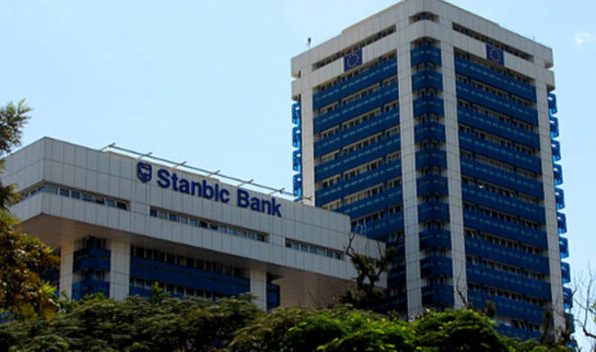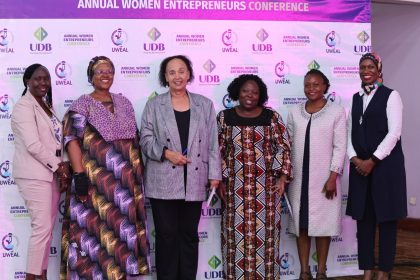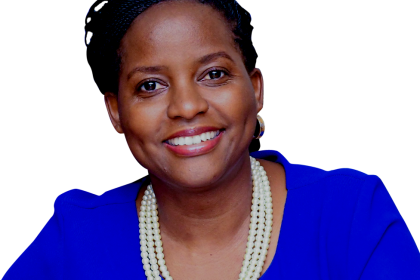Fitch upgrades Stanbic Bank Uganda credit rating as profits soar
 Fitch says that SBUL’s balance sheet is structurally liquid, which helps mitigate high single-depositor concentration.
Fitch says that SBUL’s balance sheet is structurally liquid, which helps mitigate high single-depositor concentration.
Fitch Ratings, the International credit rating agency, has upgraded Stanbic Bank Uganda Limited’s (SBUL) Viability Rating (VR) to ‘b+’ from ‘b’ due to improved capital buffers relative to its risk profile. VR is the assessment of the bank’s standalone creditworthiness.
SBUL is the anchor subsidiary of Stanbic Holdings Uganda Limited which is part of the Standard Bank Group (SBG). Fitch has also affirmed the bank’s National Ratings at ‘AAA (uga)/Stable’, the highest possible on Uganda’s national scale based on the potential support available for SBUL from the Group.
The VR reflects the concentration of the bank’s operations in Uganda’s relatively weak operating environment as well as SBUL’s leading market position, large capital buffers supported by internal capital generation, diversified and healthy revenue streams and good asset quality.
Recently the bank published its financials for 2022 which saw a profit after tax rise by 33% to UGX 366 billion ($97.7 million) from UGX275 billion ($73 million) posted during 2021.
Fitch forecasts Uganda’s real GDP will grow by 5.5% in 2023 (2022: estimate 4.9%). The economy has been resilient to adverse global conditions and domestic climate risk events, as well as an Ebola outbreak in the fourth quarter of 2022. Inflation was 9.2% in February 2023, prompting the Bank of Uganda to maintain the policy rate at 10% (increased by a cumulative 350 basis points in 2022).
According to Fitch, SBUL’s Long-Term Issuer Default Rating (IDR) is driven by potential, as expressed by its Shareholder Support Rating (SSR), and is underpinned by the bank’s Viability Rating (VR). IDR is an assessment of the bank’s relative vulnerability to default on financial obligations. However Fitch adjusted Stanbic’s Long-Term IDR to Negative from Stable and affirmed the IDR at ‘B+’. This outlook revision follows the similar rating action on the Ugandan sovereign on 24 March 2023.
SBUL’s ‘b+’ SSR is one notch below SBG’s Long-Term IDR, reflecting its strategically important role in the group’s regional operations outside South Africa. SBU’s small size (end-2022: only 1% of SBG’s assets) underpins SBG’s ability to provide support. SBG has an indirect 80% shareholding in SBU.
SBUL is the largest bank in Uganda, with around 20% of banking sector assets. Its leading domestic franchise is underpinned by a strong corporate and investment banking business, relationships with the leading corporates operating in Uganda, and significant benefits derived from being part of a large pan-African banking group.
SBUL’s impaired loans (Stage 3 loans under IFRS 9) ratio decreased to 2.9% at end-2022 (end-2021: 4.6%), supported by significant write-offs and large recoveries. Total loan loss allowances/impaired loans significantly increased to 127% at end-2022. The majority of loans under pandemic-related payment moratoriums, which expired in October 2022, have recovered. Fitch does not expect further pressure on asset quality.
Operating profit/risk-weighted assets (RWA) was 7.7% in 2022, driven by a wide net interest margin (8.3%), high non-interest income and lower loan impairment charges.
According to the Fitch statement, ‘We expect profitability to remain high in 2023 as we anticipate high rates will persist. SBUL’s Fitch Core Capital ratio improved to a high 25.3% at end-2022 (end-2021: 21.2%) due to strong internal capital generation and muted RWA growth. Strong pre-impairment operating profit (13.9% of average loans in 2022) provides a large buffer to absorb potential asset quality pressures. SBUL’s regulatory capital ratios have healthy buffers above the new minimum requirements’.
The agency continues that SBUL’s balance sheet is structurally liquid, which helps mitigate high single-depositor concentration. However on a cautionary note Fitch says a downgrade of SBUL’s Long-Term IDR would require a downgrade of both the SSR and VR.
SBU’s SSR is sensitive to a weakening in SBG’s ability or propensity to provide support. Reduced ability to support would most likely result from a downgrade of SBG’s Long-Term IDR.
‘The rating is also sensitive to a downward revision of Uganda’s Country Ceiling of ‘B+’, which captures Fitch’s view of transfer and convertibility risk, most likely to be triggered by a downgrade of Uganda’s ratings,’ Fitch said.
An upgrade of SBU’s Long-Term IDR requires either an upgrade of the SSR or VR. An upgrade of SBU’s SSR would require both an upgrade of SBG’s Long-Term IDR and an upward revision of Uganda’s Country Ceiling. An upgrade of SBU’s VR would likely require a sovereign upgrade accompanied by an improvement in operating environment and stable profitability, while maintaining healthy capital buffers.

 Trading leads as main source of income for Ugandans
Trading leads as main source of income for Ugandans
 New leadership for bankers’ umbrella as total assets top $12 billion
New leadership for bankers’ umbrella as total assets top $12 billion
 Big fish in small pond Stanbic notches up $100m profit for 2023 topping previous figure by 15%
Big fish in small pond Stanbic notches up $100m profit for 2023 topping previous figure by 15%
 Inaugural event sets agenda for supporting women-owned businesses
Inaugural event sets agenda for supporting women-owned businesses
 Standard Bank Group reports $2 billion earnings up 27% from 2022
Standard Bank Group reports $2 billion earnings up 27% from 2022
 Stanbic Bank Uganda Chief Executive elevated to regional role in Nairobi
Stanbic Bank Uganda Chief Executive elevated to regional role in Nairobi
